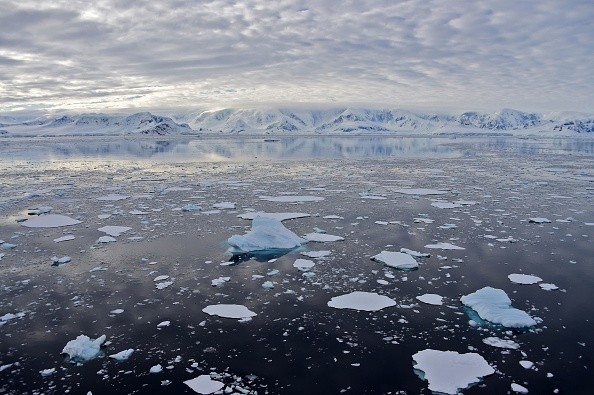Cloud formation in the Arctic can be influenced by solid aerosols.
Researchers predicted that as the Arctic loses ice, more of these unique particles will emerge from marine emissions coupled with ammonia from birds, affecting cloud formation and temperature.
Understanding the features of aerosols in the atmosphere is also crucial for enhancing climate models' capacity to predict present and future climate in the Arctic and beyond.
The Arctic is fast losing sea ice, which means deeper ocean.
It also means more gas and aerosol releases first from sea into the sky, which warms the atmosphere and makes it cloudier.
When University of Michigan aerosol scientist Kerri Pratt's team gathered aerosols from of the Arctic atmosphere in summer 2015, Rachel Kirpes, a doctorate student at the time, noticed something unusual: aerosolized ammonium sulfate particulates didn't seem like ordinary liquid aerosols.
Kirpes found that ammonium sulfate nanoparticles, that should have been liquid, were really solid, while working alongside fellow aerosol scientist Andrew Ault.
The findings of the group have been published in the Proceedings of the National Academy of Sciences.
Solid aerosols have the potential to alter cloud formation in the Arctic.

Researchers anticipated to see more of these unusual particles created from marine emissions coupled with ammonia from birds as the Arctic loses ice, which will have an influence on cloud formation and climate.
Understanding the features of aerosols in the atmosphere is also important for improving climate models' capacity to predict present and future climate in the Arctic and beyond.
"Because the Arctic is warming faster than anyplace else on the planet, these sorts of particles may become more relevant as we have more emissions from open water in the atmosphere," said Pratt, an associate professor of chemistry and earth and environmental sciences, as per ScienceDaily.
The aerosols measured up to 400 nanometers in diameter, which is nearly 300 times lower than the width of a human hair.
Aerosols within Arctic are typically thought to be liquid, according to Ault, an assistant professor of chemistry.
The particle turnes liquid when the relative humidity of the atmosphere reaches around 80% of that on a humid day.
When you dry the aerosol out again, it takes around 35% to 40% relative humidity to transform it into a solid. Scientists anticipated finding fluid aerosols since the air above the Arctic Ocean or any ocean is humid.
How do aerosols affect climate?
Incoming solar energy is scattered by all air aerosols, and certain aerosol forms may absorb solar light.
The most essential of them is BC, although mineral dust and other OC elements may also absorb sunlight.
By increasing the total reflected solar energy from the Earth, aerosols that primarily scatter solar radiation have a cooling impact.
Aerosols that absorb a lot of light have a warming impact.
There is a mix of scattering and absorbing aerosols in the atmosphere, and their overall influence on the Earth's energy budget is determined by surface and cloud properties.
The most efficient methods are scattering aerosols over a dark surface and absorbing aerosols above a light surface.
Because a subset of aerosols may act as cloud condensation nuclei (CCN) and ice nuclei, they are essential for cloud formation (IN).
Increased aerosol concentrations may raise CCN numbers, resulting in more, but shorter, cloud particles for fixed liquid moisture content.
The cloud albedo effect occurs when the albedo of the cloud is increased, resulting in increased reflection and cooling.
Smaller droplets take longer to expand to the size where they may eventually fall as rainfall.
This process, known as the cloud lifetime effect, can increase cloud cover and so add to the cooling impact.
Related article: Edit Earth Literally: Aerosol and Solar Geoengineering to Solve Ozone Damage
© 2025 NatureWorldNews.com All rights reserved. Do not reproduce without permission.





